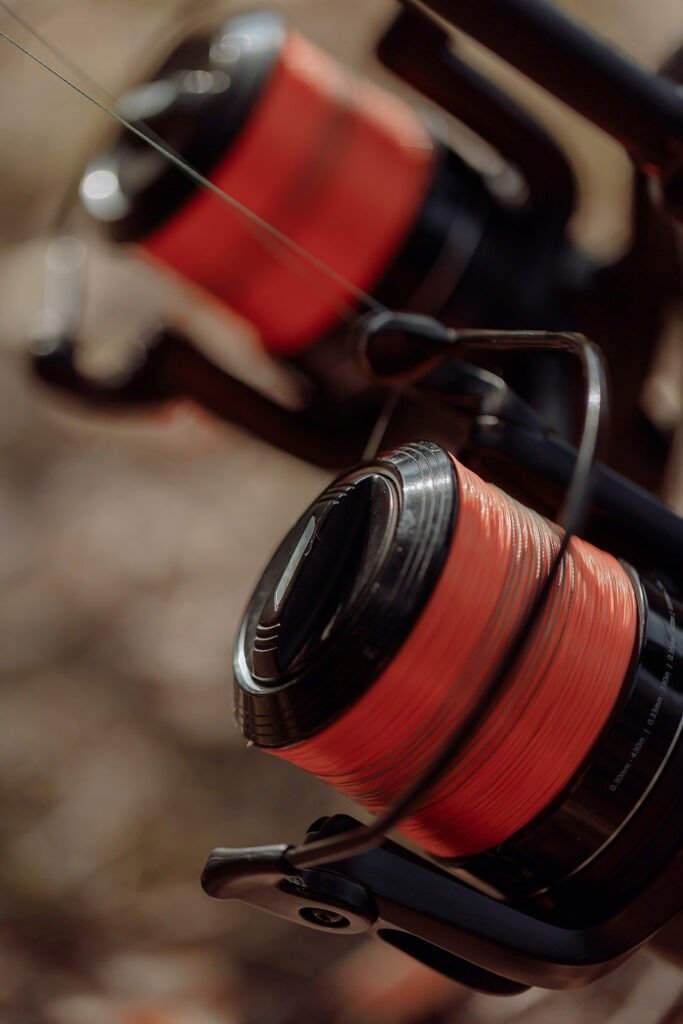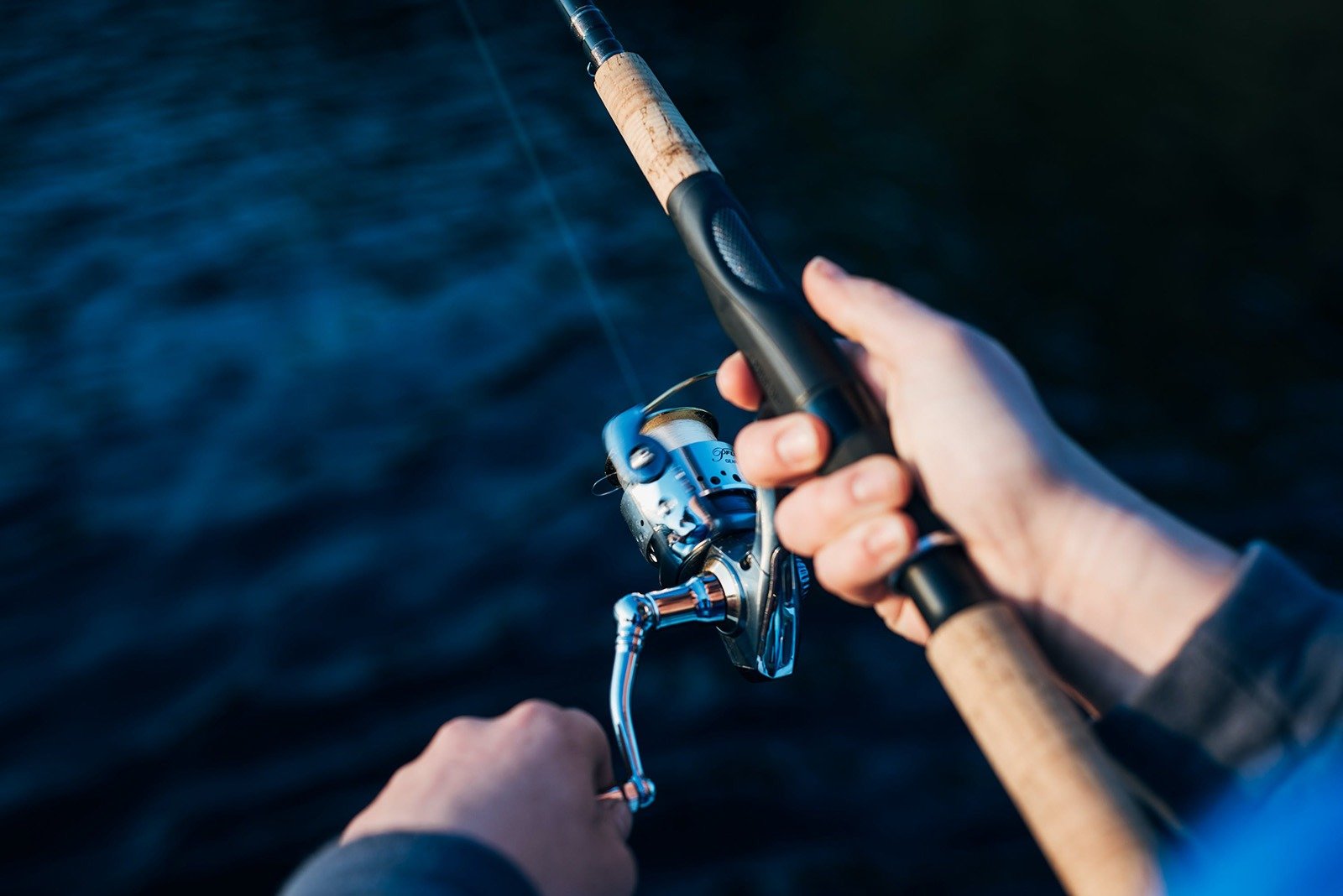Are you ready to embark on an unforgettable glamping experience? Whether you’re a seasoned angler or new to the world of fishing, having the right gear is crucial for an enjoyable and successful trip. In “The Ultimate Guide to Choosing Fishing Gear for Glamping,” we will explore the essential tools and equipment you need to bring along on your glamping adventure. From fishing rods and reels to tackle boxes and accessories, we’ve got you covered. Get ready to make the most of your time in nature while reeling in some impressive catches!

Types of Fishing Gear
When it comes to fishing gear, there are several essential items that every angler needs to have in their arsenal. From rods and reels to lines, lures, and hooks, each piece of equipment plays a crucial role in your fishing success. Let’s take a closer look at these different types of fishing gear:
Rods
Rods are the backbone of your fishing setup, serving as the foundation for casting and reeling in your catch. There are various types of fishing rods available, but three popular options are spinning rods, casting rods, and fly rods.
- Spinning Rods: These versatile rods are perfect for beginners and experienced anglers alike. They feature a reel seat on the underside of the rod and are designed for spinning reels. Spinning rods are ideal for casting light lures and baits, making them great for targeting a wide range of fish species.
- Casting Rods: Casting rods, also known as baitcasting rods, are designed to work with baitcasting reels. They offer excellent accuracy and control, making them a favorite among anglers who want to cast heavy lures or baits with precision. Casting rods are commonly used for freshwater and saltwater fishing.
- Fly Rods: If you’re a fan of fly fishing, a dedicated fly rod is a must-have. Fly rods are designed to cast lightweight, artificial flies using a special fly reel and fly line setup. They come in different weights and lengths to suit different fishing conditions and target species.
Reels
Reels are responsible for holding and releasing the fishing line, allowing you to control the movement of your bait or lure. Just like rods, there are different types of reels suitable for various fishing techniques. The three main types of fishing reels are spinning reels, baitcasting reels, and fly reels.
- Spinning Reels: Spinning reels are the most popular type of fishing reel and are widely used for all-around fishing. They feature a fixed spool that prevents backlash and is easy to use, making them a great choice for beginners. Spinning reels work well with spinning rods and are suitable for both freshwater and saltwater fishing.
- Baitcasting Reels: Baitcasting reels are favored by experienced anglers who want maximum control and precision. These reels are mounted on top of casting rods and offer superior strength and accuracy for handling heavy baits and fighting larger fish. Baitcasting reels require more skill to use effectively but can provide excellent casting distance and control.
- Fly Reels: Fly reels are specifically designed for fly fishing and are an integral part of the fly fishing setup. Unlike spinning and baitcasting reels, fly reels do not have a drag system to play fish; instead, they hold the specialized fly line and provide balance to the fly rod. Fly reels come in different sizes and designs, depending on the weight of the fly line and the target species.
Lines
Fishing lines are the invisible connection between you and the fish. They vary in strength, visibility, and stretch, allowing you to choose the most suitable line for your fishing needs. The three main types of fishing lines are monofilament, fluorocarbon, and braided lines.
- Monofilament: Monofilament lines are widely used and loved by anglers for their versatility and affordability. They are available in different strengths and have a good balance between invisibility underwater and overall durability. Monofilament lines tend to have more stretch, which can be beneficial when fighting larger fish.
- Fluorocarbon: Fluorocarbon lines have gained popularity in recent years due to their excellent invisibility in the water. They have a refractive index similar to that of water, making them nearly invisible to fish. Fluorocarbon lines also sink faster than monofilament, making them ideal for certain fishing techniques like deepwater fishing. They have low stretch and high abrasion resistance.
- Braided: Braided lines are constructed of multiple strands of synthetic fibers woven together, resulting in a super-strong and thin fishing line. They have minimal stretch, excellent strength, and high sensitivity, making them ideal for detecting subtle bites and for fishing in heavy cover. Braided lines also have a high knot strength, which ensures a secure connection between your line and lure.
Lures
Lures are artificial baits designed to mimic the appearance and movement of natural prey, enticing fish to strike. There is a wide variety of lures available, each designed for different fishing scenarios and target species. Here are some commonly used lure types:
- Jigs: Jigs are versatile lures that consist of a weighted head and a hook with a soft plastic or feather tail. They can be used in both freshwater and saltwater fishing and are effective for enticing a variety of fish species, including bass, walleye, and trout.
- Spoons: Spoons are metal lures with a concave or convex shape that produces a wobbling action when retrieved. They are often used in freshwater fishing for species like pike and musky, but can also be effective for saltwater game fish like salmon and redfish.
- Crankbaits: Crankbaits are designed to mimic swimming or injured prey fish, and typically have a lip on the front that creates a diving or wobbling action. They come in various sizes, shapes, and diving depths, making them versatile options for targeting different fish species.
- Soft Plastics: Soft plastic lures are made from flexible materials like rubber or silicone and can resemble worms, minnows, or other natural prey. They are effective for bass fishing and are often rigged on a jig head or Texas-rig for a realistic presentation.
- Topwater Lures: Topwater lures are designed to imitate prey that floats or moves on the water’s surface. They create a commotion that attracts fish to strike from underneath, providing an exhilarating fishing experience. Topwater lures are commonly used for species like bass and trout.
Hooks
Hooks are critical components of your fishing rig, ensuring a secure connection between your line and the fish. Different types of hooks are available to suit various fishing techniques and target species. Here are three commonly used hook types:
- Circle Hooks: Circle hooks are known for their unique shape, with the point of the hook turned towards the shank. These hooks are designed to hook the fish in the corner of the mouth, reducing the chance of deep hooking and improving fish survival rates when practicing catch and release.
- J-Hooks: J-hooks are the traditional hook shape, resembling the letter “J.” They come in various sizes and designs to accommodate different bait sizes and fishing techniques. J-hooks are versatile and can be used for a wide range of fish species.
- Treble Hooks: Treble hooks consist of three hook points connected to a single shank, providing increased chances of hooking fish. They are commonly used in lures, where multiple hooks increase the likelihood of hooking a predator fish.
Considerations for Choosing Fishing Gear
Now that we have explored the different types of fishing gear available, it’s important to consider several factors when choosing the right gear for your fishing adventures. These considerations can greatly impact your fishing success and overall enjoyment. Let’s take a look at the key factors to keep in mind:
Location
The location where you plan to go fishing plays a significant role in determining the most suitable gear. Are you fishing in freshwater or saltwater? Different gear and tackle are required for each environment. Freshwater gear is generally lighter and more sensitive, while saltwater gear needs to withstand the corrosive effects of saltwater.
Target Fish Species
The fish species you are targeting will dictate the type of gear you need. Different fish species have unique characteristics and behaviors, requiring different gear setups and techniques. Research and understand the characteristics and habitats of your target fish to select the appropriate gear.
Fishing Technique
There are various fishing techniques, such as casting, trolling, fly fishing, and bottom fishing. Each technique requires specific gear and tackle to maximize effectiveness. Consider your preferred fishing technique or the technique best suited to your target fish species when selecting your fishing gear.
Budget
Your budget is an important consideration when choosing fishing gear. While there are high-end, top-of-the-line options available, there are also more affordable alternatives. Consider how often you plan to fish, your skill level, and your long-term fishing goals when setting a budget. Remember that quality gear can enhance your fishing experience and provide better performance and durability.
Location
The location where you plan to go fishing is an essential factor in determining the gear you should bring. Whether you’re going freshwater fishing in a serene lake or embarking on an epic saltwater fishing adventure, the gear you choose must match the conditions of the location. Each environment presents unique challenges, and having the appropriate gear will greatly enhance your chances of success.
Freshwater
Freshwater fishing involves fishing in lakes, rivers, ponds, and streams that do not contain saltwater. Some popular freshwater fish species include trout, bass, salmon, catfish, and pike. When fishing in freshwater, it’s crucial to select gear that can handle the specific conditions and target fish species. Lighter rods and reels, along with smaller lures and hooks, are usually suitable for freshwater fishing, allowing for finesse presentations and precision casting.
Saltwater
Saltwater fishing takes place in oceans, seas, and other bodies of water that have high salinity levels. Saltwater fishing offers a vast array of species, including redfish, snook, tarpon, marlin, and tuna. The harsh saltwater environment requires robust gear that can withstand corrosion and provide the strength and power necessary to handle larger fish. Heavy-duty rods and reels, as well as corrosion-resistant components, are essential for saltwater fishing. Additionally, saltwater lures and hooks are often larger and more durable to attract and hook powerful saltwater game fish.
Target Fish Species
The fish species you are targeting will greatly influence your choice of fishing gear. Different fish have different behaviors, feeding patterns, and habitat preferences. Understanding your target fish species will help you select the most effective gear to attract and catch them. Here are some examples of popular fish species and the gear commonly used to target them:
Trout
Trout are freshwater fish found in lakes, rivers, and streams. They are known for their elusive nature and can be particularly challenging to catch. To target trout, a lightweight spinning rod and reel combo are often the preferred choice. Use light monofilament lines and smaller lures or baits to entice trout in their natural habitats. Additionally, fly fishing with a lightweight fly rod and reel setup is a popular method for targeting trout.
Bass
Bass, including largemouth bass and smallmouth bass, are popular freshwater fish species sought after by many anglers. Bass are known for their aggressive nature and hard-hitting strikes. To catch bass, anglers commonly use medium to heavy spinning or casting rods paired with reels capable of handling heavier lines. Bass fishing lures like soft plastics, crankbaits, and topwater lures are often effective in enticing these predatory fish.
Salmon
Salmon are prized game fish found in both freshwater and saltwater environments. When targeting salmon, anglers often opt for medium to heavy spinning or casting rods designed for larger fish species. Salmon-specific lures, such as spoons, plugs, and flies, are commonly used to attract these powerful fish. Salmon can be found in rivers during their spawning runs and in the open ocean during other times, so the fishing gear chosen will depend on the specific location and fishing technique employed.
Catfish
Catfish inhabit freshwater bodies and are known for their significant size and bottom-dwelling behavior. To target catfish, anglers typically use heavy rods with strong backbone paired with spinning or casting reels capable of handling heavy lines and weights. Bottom fishing rigs with live or prepared bait are commonly used to entice catfish. Catfish hooks are often larger and heavily weighted to ensure a secure hookset.
Pike
Pike are predatory fish commonly found in freshwater lakes and rivers. Known for their aggressive nature and sharp teeth, pike require durable and robust fishing gear. Anglers targeting pike often use medium to heavy spinning or casting rods that can handle the heavier lines necessary to land these toothy fish. Large crankbaits, spoons, and jerkbaits are popular lure choices for pike fishing.
Redfish
Redfish, also known as red drum, are prized saltwater game fish found in coastal areas. They are known for their powerful runs and hard-fighting nature. To target redfish, anglers typically use medium to heavy spinning or casting rods combined with saltwater-specific reels. Saltwater lures like soft plastics, spoons, and topwater lures are effective in enticing redfish to strike.
Budget
Your budget is an important consideration when choosing fishing gear. Fishing can be an expensive hobby, but it doesn’t have to break the bank. The cost of fishing gear varies widely, depending on brand, quality, and features. Understanding your budget and evaluating your fishing needs will help you make informed decisions when purchasing fishing gear. Here are three general categories of fishing gear based on budget:
Entry-Level Gear
Entry-level fishing gear offers affordability without compromising quality and performance. These are suitable for beginners or anglers on a tight budget. Entry-level rods, reels, lines, lures, and hooks are widely available and can provide a satisfactory fishing experience for a range of fish species. While they may not have all the top-of-the-line features, entry-level gear allows you to get started and learn the basics of fishing without a significant investment.
Mid-Range Gear
Mid-range fishing gear strikes a balance between affordability and advanced features. These products usually offer better quality, durability, and performance compared to entry-level gear. Mid-range rods, reels, lines, lures, and hooks are designed to cater to anglers who want to step up their game or have more specific needs. Investing in mid-range gear can greatly enhance your fishing experience and provide better performance and longevity.
High-End Gear
High-end fishing gear represents the pinnacle of quality, technology, and performance. These are top-of-the-line products designed for seasoned anglers and those who demand the best. High-end rods, reels, lines, lures, and hooks offer superior craftsmanship, advanced features, and cutting-edge materials. While they come at a higher price point, high-end gear can provide unparalleled satisfaction and performance on the water.
In conclusion, choosing the right fishing gear is essential for a successful and enjoyable fishing experience. By considering factors such as location, target fish species, fishing technique, and budget, you can select the appropriate rods, reels, lines, lures, and hooks to suit your needs. Remember to do your research, seek advice from experienced anglers, and test different gear to find what works best for you. Happy fishing!


